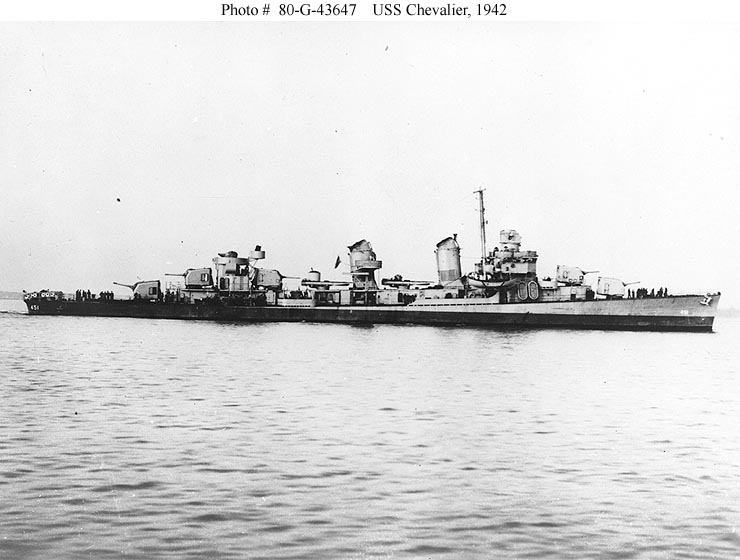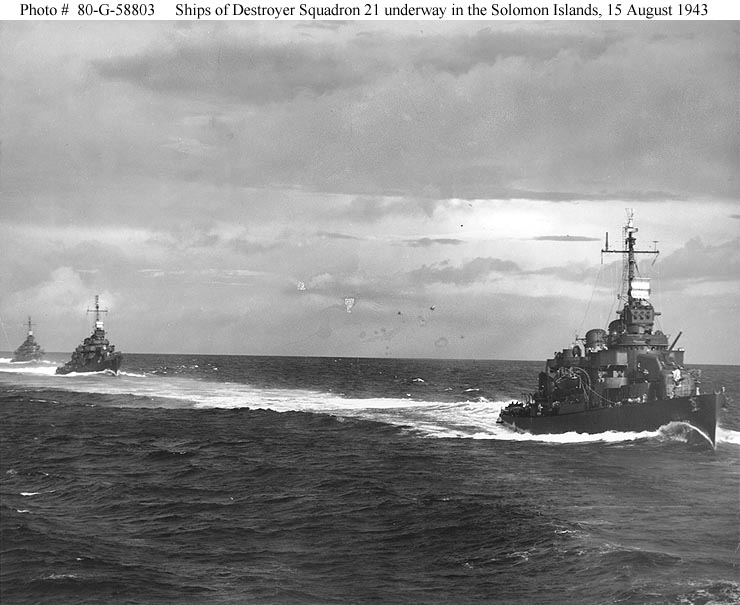A larger fleet will not build itself - especially a reach through the headwinds of the next decade to 355. To do so will not just take words, it will take vision, leadership, and substantial investment.
Nothing will happen without strong consistent Presidential leadership, supporting senior personnel, and emphasis that this is a priority.
How to get there? Regular guest Bryan McGrath has offered us the opportunity to post an open letter to President Trump on that exact topic.
Bryan, over to you.
Dear Mr. President,
To begin, I would like to wish you and your family a Happy New Year and much happiness in 2020.
The central message of this letter is that the Navy will not grow without your personal and sustained interest. Some background follows.
We are not acquainted, but if you asked a few folks in your national security team who I am, you would find that I am not well thought of in that circle. My criticisms of you as a person, a candidate, and as president have been consistent and unremitting. However, our differences are not the subject of this letter. Rather, I hope to connect with you on a subject that unites us, and that is a larger, more powerful Navy.
For the purposes of this discussion, I assume that your campaign promise to grow the Navy to 350 ships was an authentic policy position, and that the Navy’s late 2016 Force Structure Assessment (indicating a requirement for 355 ships) represents that Service’s attempt to reconcile what is being asked of it globally in an era of renewed great power contention.
Counting ships is an unsatisfying way of characterizing a Navy’s strength. Numerous other factors come into play, to include weapons, sensors, networks, carrier air wings and shore-based aviation, deployment patterns, employment posture, and training cycles. But a simple count remains the best method of quickly conveying to general audiences the strength of this Navy relative to past U.S. Navies and relative to other navies (when counted similarly).
As I draft this letter, there are 293 ships in the Navy’s battle fleet, which suggests growth on the order of 21% to reach your desired fleet. The Department of the Navy’s budget for 2020 is about $205.6B, and although this figure buys both a Navy and a Marine Corps, our discussion should assume an annual cost to buy, build, and maintain a 355 ship Navy as at least 21% higher (or $43.2B higher annually, in constant dollars). I qualify this figure because of my belief that current Navy readiness is underfunded, so simply increasing resources proportionally enshrines the readiness gap in a larger fleet.
Putting aside the expense associated with growing the Navy, difficulties in doing so are compounded by the inconvenient fact that the previous naval buildup (in the Reagan Administration) occurred about one ship-life in the past. Which means that as you try and build the Navy, Reagan era ships—built when there was a larger and more competitive shipbuilding industrial base—are reaching the end of their service lives, even after some of them have had significant service life extensions. The Reagan buildup was substantial, and its retirement produces considerable headwinds.
So we find ourselves with a problem. You want a significantly larger Navy. I want a significantly larger Navy. Your National Security Adviser recently made it clear that this remains an administration priority. Your Acting Secretary of the Navy made statements recently indicating that he is taking a more aggressive position in trying to bring about your wishes, seeking from uniformed leadership in the Navy and Marine Corps a plan to get to 355 ships in 10 years. Your Combatant Commanders worldwide want a larger and more powerful Navy. Your Navy Admirals want a larger and more powerful Navy (but not at the cost of its readiness). Many on Capitol Hill are in favor of building a larger Navy. So, what is the problem?
First, the defense budget has increased dramatically in your first three years in office, and I applaud this. But it hasn’t bought a bigger Navy, at least not anywhere near the bigger Navy that you and I want. It hasn’t bought a bigger Air Force, a bigger Marine Corps or a bigger Army. What this additional money did was address festering readiness sores across the Services and purchased needed precision weapons stocks. I am confident that the Joint force is at a higher state of readiness today than it was when you took office. But to repeat—it is no larger, and it must grow to keep up with our worldwide commitments to advance our security and prosperity. The expense associated with growth is massive and must contend with myriad other claimants upon the taxpayer’s dollar, including future taxpayers. Additionally, the costs associated with keeping even the present force level in a high state of readiness never go away.
Next, and related to the first, there are good cases to be made that resources for all three military department budgets are insufficient. The proof of this arises in part from the plain fact that your statements of support for growing the Navy have not translated into additional dollars necessary to not only build that Navy, but to man, train, and equip it. While conspiracy theorists sometimes point to the fact that the Defense Secretary is a West Point graduate, the Secretary of State is a West Point graduate, and the Chairman of the Joint Chiefs is an Army General as reasons the Navy has not grown in spite of your campaign promise, the truth is far more prosaic. Your cabinet secretaries and your Chairman of the Joint Chiefs are executing a National Security Strategy and National Defense Strategy that convey no real strategic rationale for a massive shift of resources within the defense budget from one Service to another. Absent a large, across the board increase in defense spending authorized by the Congress (that would grow all the Services), the only method of growing the Navy within foreseeable DoD resources is to privilege the Navy over the other Services within the department’s budgeting processes, and then take that budget to the Hill. To do this, a major strategic shift would have to occur, and this has clearly not happened.
All of this leads me to conclude that absent your leadership, a larger Navy will remain out of your grasp, and even with your leadership, it will be a difficult, but not impossible task. So please accept the following unsolicited advice designed to help achieve our common goal.
Build a Case for a Larger Navy. There is a very strong case for a larger Navy. I make it all the time. But it is a lonely calling, and it requires (again) either a massive across the board increase in defense spending (the way we achieved growth in the 80’s) or a considerable shift in current resources within DoD. The former is unlikely to happen in the current threat/budget/political environment, and the latter is unlikely without a strategic basis for doing so. Build the case. Tell your advisers that you want them to investigate alternative national security strategies that rely more heavily on seapower. Give them six months to come back to you with a few options that do so within existing DoD resources. Pick a path and then proselytize it (recognizing of course, your other duties and priorities). Do not ignore Democrats on the Hill who would likely support you.
You Want it Bad, You Get it Bad. Achieving a 355 ship Navy within 10 years with modest increases in spending is not impossible. It is however, unwise. In order to do so, you could put a freeze on the retirement of ships. You could order ships to be brought out of mothballs. You could cut down on current operations and modernization in order to harvest dollars for acquisition. I would be shocked if any or all of these considerations were not on the table as the Acting Navy Secretary seeks to meet your mandate. The problem with these options is that they will contribute to a larger—but more hollow—force that will be poorly manned, trained, and equipped. Essentially, every ship kept on duty past its planned service life, and every ship brought out of retirement, instantly become new drains on current readiness accounts, at a rate far beyond their worth to the Fleet. Change the terms of the debate in order to get what is important—a larger and more powerful Navy—and not a larger, less powerful Navy. Do this by easing off on any existing timetable, and also by considering my next recommendation.
Consider Scrapping the Current Counting Mechanism. The counting rules we operate under today flow from a Reagan-era Navy Secretary John Lehman memo. Over time they have become “customary” law, and when Obama Navy Secretary Ray Mabus tried to change them, he encountered considerable resistance on the Hill. To some extent, the rigidity of these rules is tying your hands, so I recommend calling an audible. Direct the Acting Secretary of the Navy (through the Defense Secretary) to convene a task force that brings together DoD, Navy, Joint Staff, NSC, and Capitol Hill stakeholders, the purpose of which would be to arrive at a new method of quantifying and qualifying naval power. Baseline the current fleet under new rules that would more comprehensively account for capabilities ignored under the current rules. Then announce your plan for a larger, more powerful Navy under the new rules, and with a new strategy.
Make the Navy and Marine Corps Produce on Integration. The new Commandant of the Marine Corps and the new Chief of Naval Operations are both dedicated to greater levels of integration of their services at the strategic, operational, and tactical levels. In this integration are the seeds for a greater reliance on seapower, which could then buy down risk on reducing resources to other elements of military power, allowing you to grow the Navy within a new strategic framework.
Get building. Direct the Secretary of Defense to move at least $10B annually from non-Navy accounts directly into the Navy’s budget, with half of it going to shipbuilding and half to other readiness accounts. This would be a down-payment on moving to a more seapower-oriented strategy. It would go a long way to arresting some of the cuts in shipbuilding that have been reported in the news recently. Keep in mind that this would be a down-payment on a much larger expenditure that will have to be continued over time.
Mr. President, your instincts on the need for a larger and more powerful Navy are right but the bureaucracy that must unlimber to bring it about needs your vocal and consistent leadership. I realize that you have a lot on your plate these days, but it does not take much time to look your team in the eye and tell them to bring you options by a date certain. This is of course, only half the battle, as you would then need to persuade the Congress to join you in this pursuit. Few things you do in your time in office would be as consequential as building the Navy this nation requires, and the cheering you hear from the shore will be me.
Bryan McGrath is the Managing Director of The FerryBridge Group LLC, a national security consultancy. The ideas offered here should be considered his and are not those of any client he represents.





















